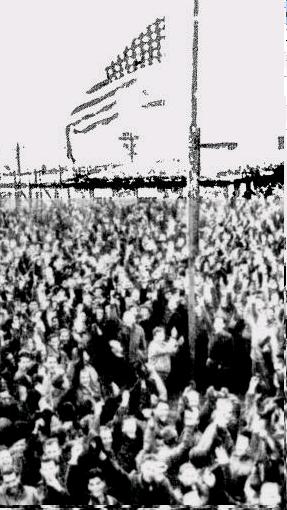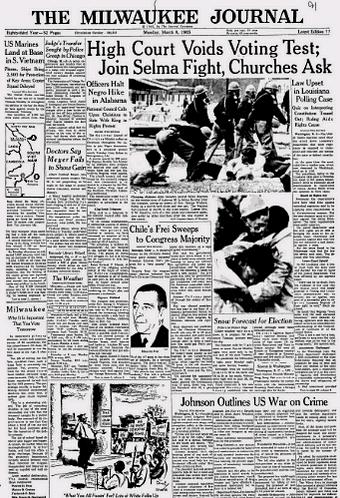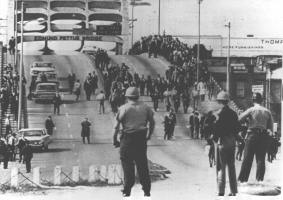In part 1 of this series, we looked at the ingenious control mechanism employed by the Japanese Fu-Go fire balloons of World War II. The balloons were launched from Japan and traveled to North America where they dropped incendairies. They were also equipped with a demolition charge set to destroy the weapon after it had served its purpose.
One of these balloons was responsible for the war’s only civilian deaths within the 48 United States caused by enemy action. The last balloon was launched in April 1945, but the deaths occurred seventy years ago this month, on May 5, 1945.
Southern Oregon was seemingly far removed from the war. Victory in Europe was only three days away, and the war raging in the Pacific seemed far away. The papers that Saturday morning were full of war news, but the news was all good, such as this photo of American POW’s being liberated in Germany.
Archie Mitchell was the 27-year-old pastor of the Christian and Missionary Alliance Church in Bly, Oregon. His wife, née Elsie Winters, 26, was five months pregnant.
On May 5, 1945, Rev. and Mrs. Mitchell took a group of five children from the church on a picnic and fishing trip at Gearhart Mountain, on land within the Fremont National Forest owned by the Weyerhaeuser Timber Company. The road near Leonard Creek was under construction. Mrs. Mitchell and the children got out of the car while Rev. Mitchell turned the car around and started getting out the picnic lunch.
While hiking around the area, Mrs. Mitchell and the children spotted one of the Japanese balloons. Due to the news blackout, they were oblivious as to its possible origin. One of the road workers nearby saw the six gathered around in a semicircle, but wasn’t able to see what they were looking at. Mrs. Mitchell called out to her husband to come look at it, and he responded that he would come and look.
But before he could get there, there was a huge explosion, throwing debris over 150 yards. Rev. Mitchell and the worker ran to the scene, only to find four of the children already dead. Mrs. Mitchell and the other child died within a few minutes, never regaining consciousness.
The victims of the attack were:
- Elsie Mitchell, age 26
- Jay Gifford, age 13
- Edward Engen, age 13
- Dick Patzke, age 14
- Joan Patzke, age 13
- Sherman Shoemaker, age 11
These were the only civilians killed by enemy action within the continental United States during the war.
Because of the deaths, the news embargo was lifted a few weeks later. By this time, however, the Japanese had abandoned the program.
One would think that this is the end of the story. But Rev. Mitchell had not seen the end of wartime tragedy. Within two years, he was remarried to Betty (née Patzke) and the couple was called as missionaries to Asia. Eventually, they were stationed in Vietnam and worked at the Ban Me Thuot Leprosarium, located about nine miles from the town of Ban Me Thuot. By 1962, the couple had four children, ages 4-13.
At dusk on May 30, 1962, the staff of the leprosarium were gathering for their weekly prayer meeting when twelve members of the Viet Cong entered the grounds. The missionaries convinced the Viet Cong that if they left Mrs. Mitchell and the children alone, that they would fully cooperate. They left the compound a couple of hours later with Rev. Mitchell and two other captives.
Military intelligence was able to track the hostages’ location for a number of years, but a military rescue mission was not possible. The Christian and Missionary Alliance engaged in negotiations to free the three, but the negotiations collapsed in 1969.
In the next part of this series, we’ll look at some of the extraordinary distances covered by some of the balloons, some of which were recovered in places like Nebraska, Iowa, and Michigan. Click here to continue to part 3. In the final installment, we’ll learn how one of these balloons found its way to Minnesota.
References
- Fire Balloon at Wikipedia
- Archie Mitchell at Wikipedia
- The Two Tragedies of Archie Mitchell
- Missionaries Kidnapped–How It Happened at Christian & Missionary Alliance
Read More at Amazon
Click Here For Today’s Ripley’s Believe It Or Not Cartoon ![]()



